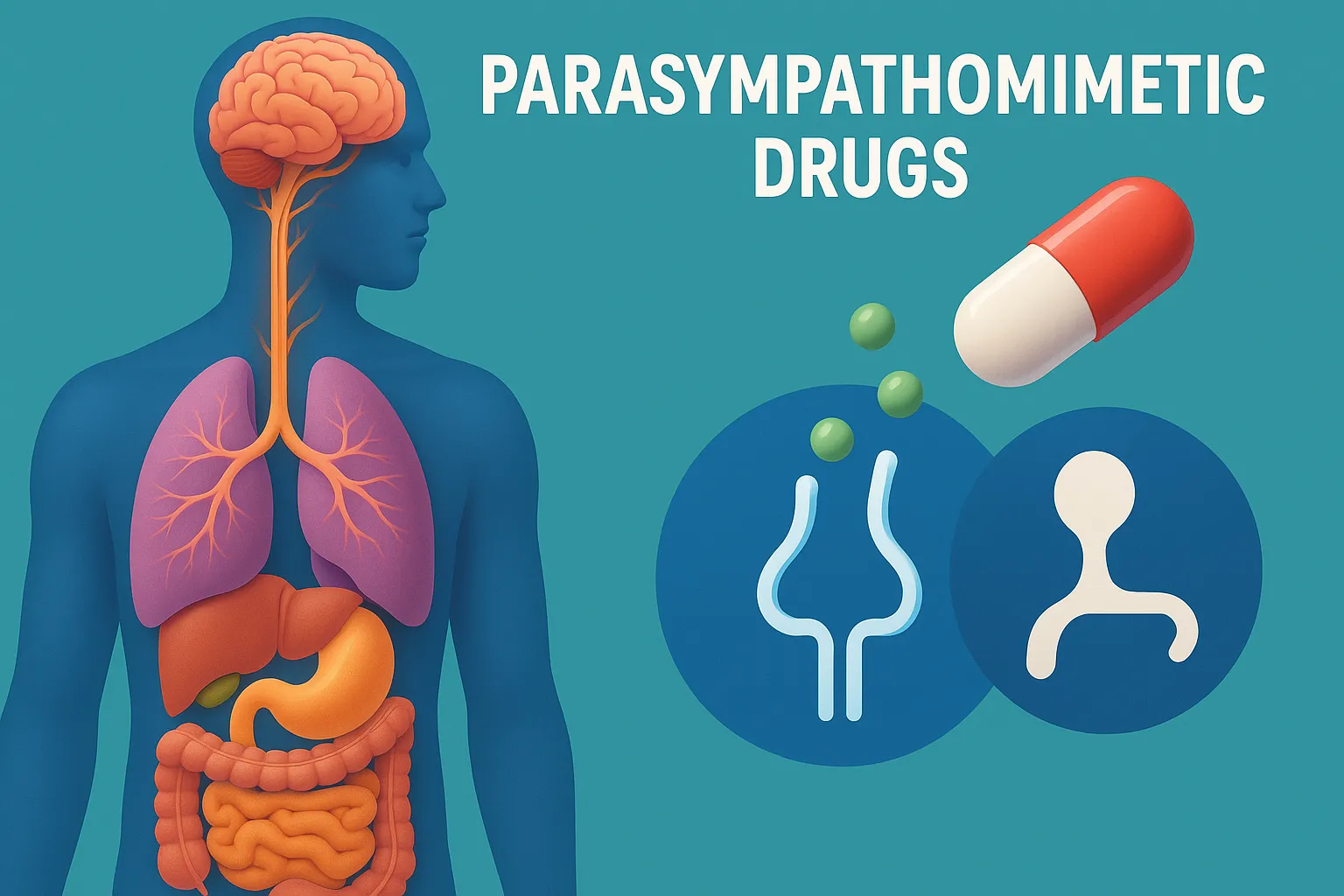Parasympathomimetic Drugs (Cholinergic Agonists) are agents that mimic acetylcholine, stimulating parasympathetic activity to control functions like smooth muscle contraction, gland secretion, and reduced heart rate.
Definition of Parasympathomimetic Drugs:
- Parasympathomimetics are drugs that mimic the action of the parasympathetic nervous system.
- They enhance the effects of acetylcholine (ACh) at muscarinic or nicotinic
Classification with MOA:
- Direct-acting parasympathomimetics: Act directly on cholinergic receptors (usually muscarinic).
- Indirect-acting parasympathomimetics (Anticholinesterases): Inhibit the enzyme acetylcholinesterase, which breaks down ACh, thereby increasing ACh levels at synapses.
Examples:
-
Direct-acting:
- Pilocarpine – used in glaucoma
- Bethanechol – used for urinary retention
-
Indirect-acting:
- Neostigmine – used in myasthenia gravis
- Physostigmine – used in atropine poisoning
Pharmacological Effects:
-
Eye
- Miosis (pupil constriction): Contraction of circular muscles (sphincter pupillae) via M3 receptors.
- Accommodation: Contraction of ciliary muscle → improved near vision (helps drain aqueous humor in glaucoma).
-
Cardiovascular System
- Bradycardia: Activation of M2 receptors in the SA node decreases heart rate.
- Vasodilation (indirect): Endothelial M3 receptor activation increases nitric oxide (NO) release → smooth muscle relaxation → decreased blood pressure.
- Overall effect: Decreased cardiac output and peripheral vascular resistance.
-
Respiratory System
- Bronchoconstriction: M3 receptor stimulation on bronchial smooth muscle.
- Increased secretion: More mucous production from airway glands.
-
Gastrointestinal Tract
- Increased motility: Enhanced peristalsis via M3 receptors.
- Increased secretions: Salivary, gastric, pancreatic, and intestinal secretions stimulated.
- Relaxation of sphincters: Promotes digestion and defecation.
-
Urinary Tract
- Detrusor muscle contraction (M3 receptor): Promotes urination.
- Internal sphincter relaxation: Facilitates urine outflow.
-
Glands
- Increased secretions: Lacrimal (tears), salivary, sweat, and digestive glands all increase activity.
Clinical Uses:
- Glaucoma
- Urinary retention
- Myasthenia gravis
- Alzheimer’s disease (some central acting anticholinesterases)
- Reversal of neuromuscular blockade

